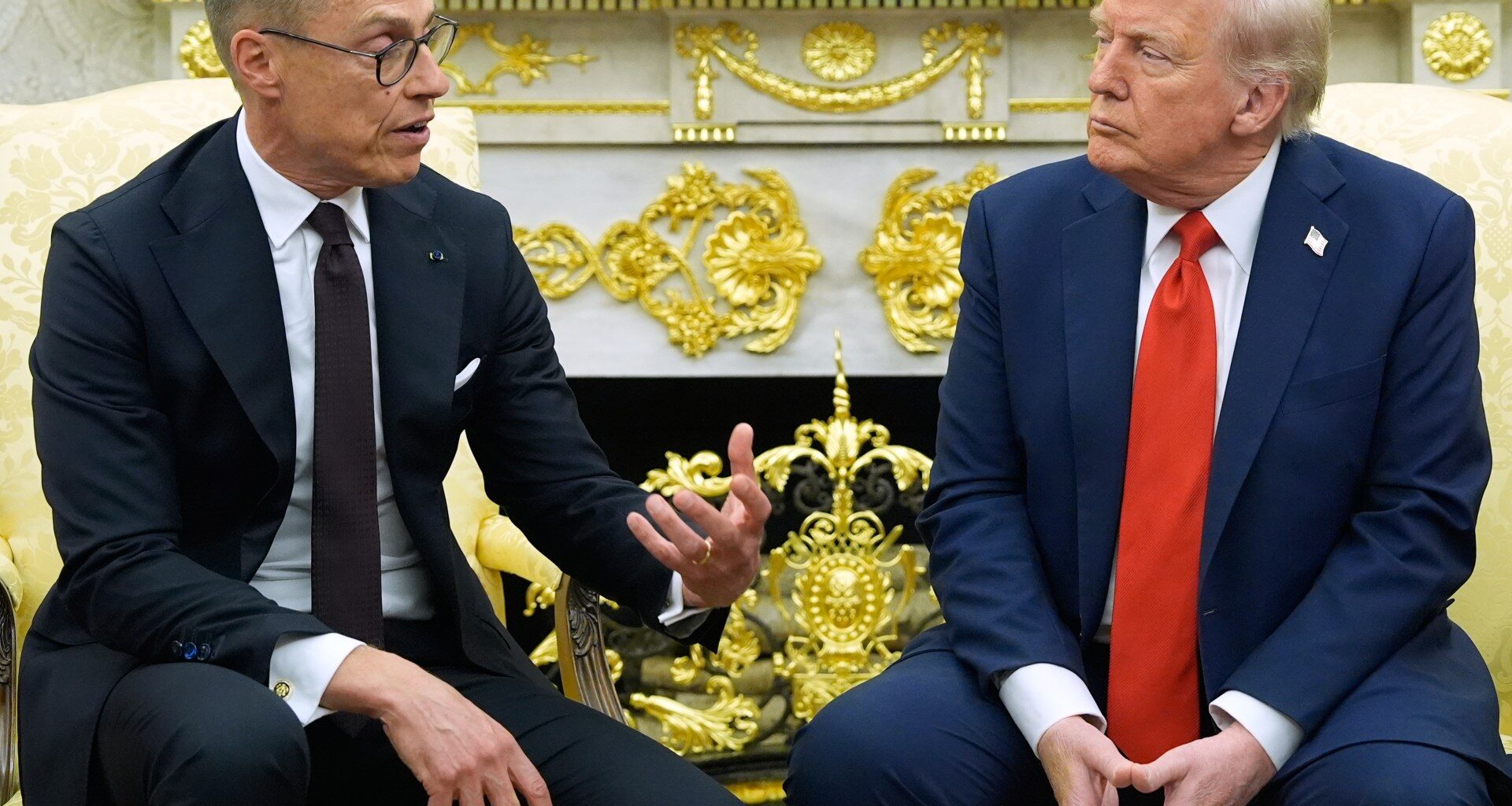The meeting was supposed to be the prelude to the purchase of Finnish icebreaker ships.
But as United States President Donald Trump welcomed Finland’s President Alexander Stubb to the Oval Office on Thursday, he veered into a discussion of the North Atlantic Treaty Alliance (NATO) — and his ongoing feud with one of its members, Spain.
Recommended Stories list of 3 itemsend of list
At a NATO summit in June, Spain was the most prominent holdout against Trump’s push to increase defence spending among member states.
Trump has long sought for all NATO members to commit 5 percent of their gross domestic product (GDP) to building up their military assets. But Spain successfully pushed for an exemption at June’s meeting, allowing its expenditures to remain around the previous benchmark of 2 percent.
That resistance lingered on Trump’s mind at Thursday’s meeting, as he discussed the US commitment to NATO with Stubb.
“As you know, I requested that they pay 5 percent, not 2 percent,” Trump said of the NATO members.
“And most people thought that was not gonna happen. And it happened virtually unanimously. We had one laggard. It was Spain. Spain. You have to call them and find out: Why are they a laggard?”
He then mused about taking retribution: “They have no excuse not to do this, but that’s all right. Maybe you should throw them out of NATO, frankly.”
It was a bitter note in an otherwise friendly meeting with Stubb, whom Trump hosted in March at his Mar-a-Lago resort in Florida.
Since his first term as president, Trump has wavered in his public comments about NATO, at times embracing the alliance and, at other moments, rejecting it as “obsolete”.
But seated next to Stubb and Finnish Prime Minister Petteri Orpo, Trump took a decidedly enthusiastic approach to defending Finland, one of the newest members of NATO. It joined the alliance in April 2023, followed by Sweden less than a year later.
Reporters at Thursday’s Oval Office meeting pressed Trump about what he might do if Russia expands its war in Ukraine to other countries in Europe.
In Finnish politics, the spectre of Russian interference looms large: The former Soviet Union invaded Finland in the 1930s, and since Russia launched its full-scale invasion of Ukraine in 2022, relations between the two countries have soured even further.
Finland closed its shared border with Russia in 2024, an international divide that stretches across 1,340 kilometres, or 841 miles.
“What if Russia and Vladimir Putin attacks Finland? Would you defend Finland?” one reporter asked Trump on Thursday.
Trump did not mince words in his reply. “I would. Yes, I would. They’re a member of NATO.”
He nevertheless cast doubt on the prospect of a Russian invasion under Putin.
“I don’t think that’s going to happen. I don’t think he’s going to do that. I think the chances of that are very, very small,” he said, turning to Stubb. “You have a very powerful military, one of the best.”
When pushed to specify how he might defend Finland in case of an attack, Trump offered one word in reply: “Vigorously.”
Those warm remarks offered a stark contrast with his approach to Spain. In the wake of the June NATO summit, for instance, Trump called Spain’s position “hostile” and threatened its economy, pledging to make it pay “twice as much” in tariffs to the US.
“I think Spain is terrible, what they’ve done,” he told reporters, accusing the country of taking a “free ride” at other countries’ expense. “That economy could be blown right out of the water with something bad happening.”
NATO was founded with 12 original members and has since expanded to include 32. Spain joined in 1982. So far, no members have ever been expelled.
